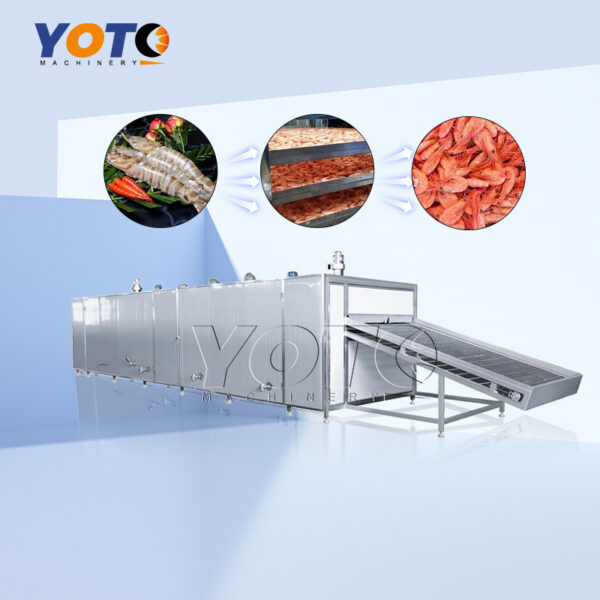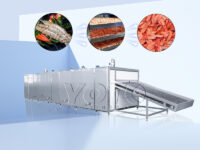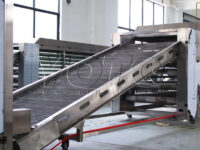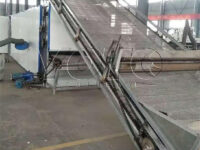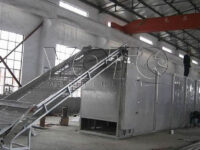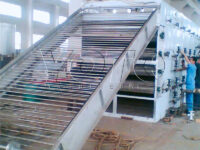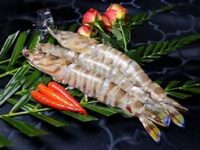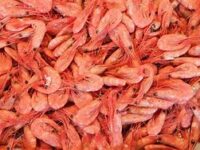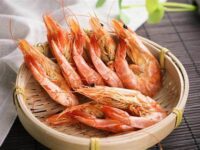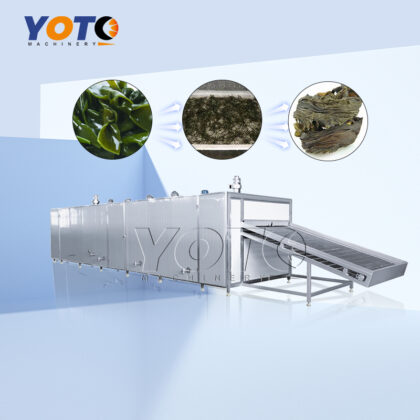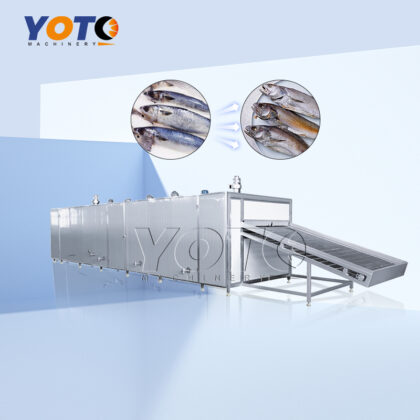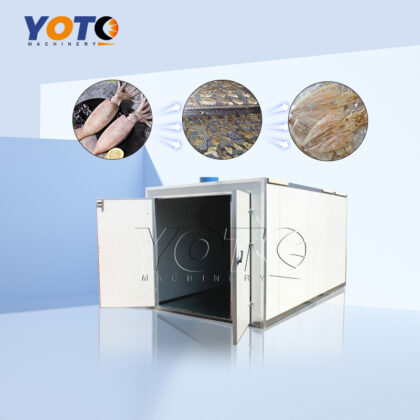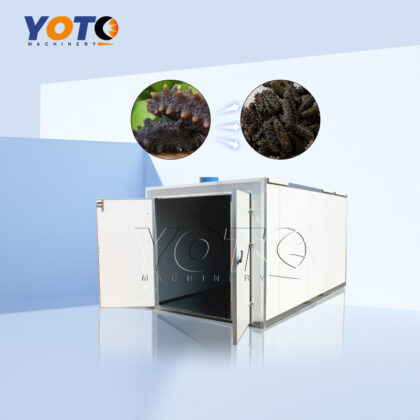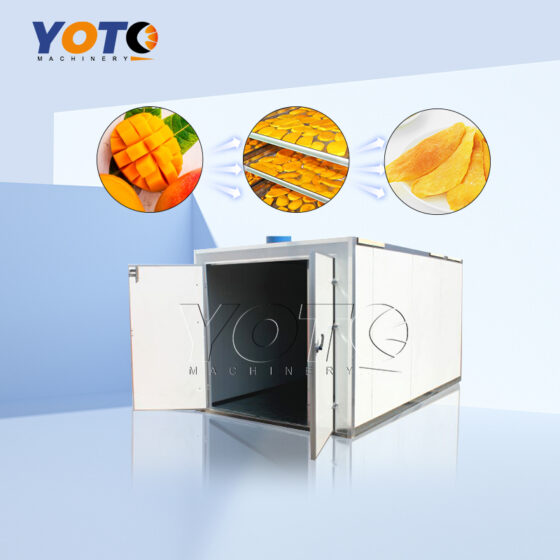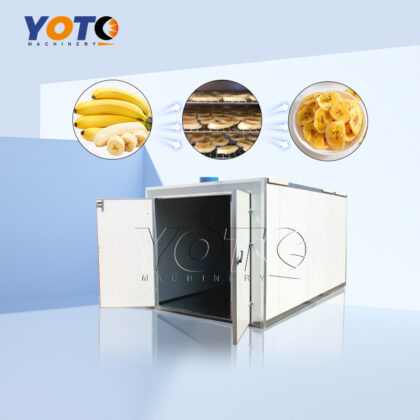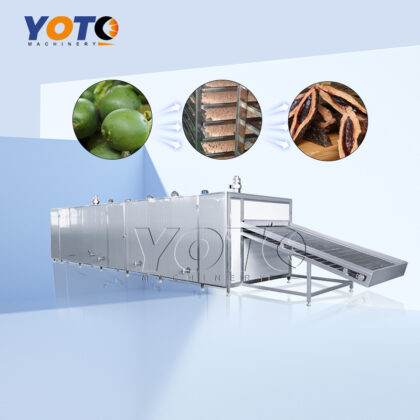Shrimp is an extremely valuable food source and aquatic resource that is extensively fished and farmed worldwide. Its nutritional and economic value is significant.
Our mesh belt drying equipment is expertly crafted to meet a variety of output requirements. It features automatic feeding, discharge, and control, as well as low heat consumption, high production efficiency, simple operation, easy maintenance, and a wide range of applications. The equipment comprises a belt conveyor, automatic feeding machine, drying machine, and other top-of-the-line components. It effectively removes moisture and achieves drying by utilizing the contact movement between hot air and wet material. The main heating methods, which include electric heating, steam heating, and hot air heating, are all highly efficient.
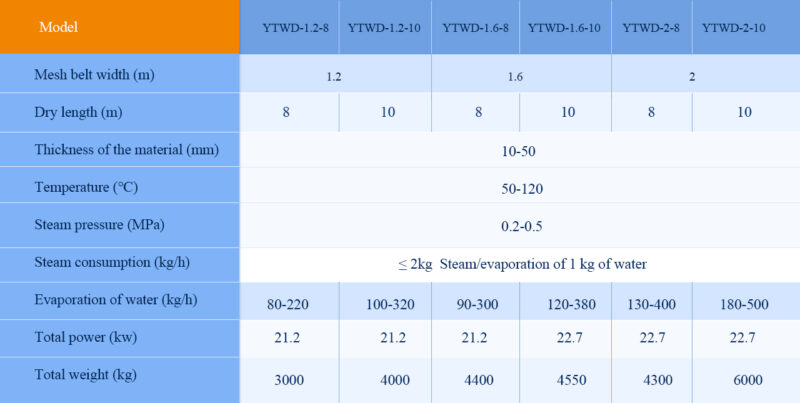
1. Large capacity: The mesh belt dryer provides continuous and automated production, with rapid dehydration speed, brief drying time, and high output.
2. High quality: The materials will maintain their shape, brightness, and colour.
3. Clean and sanitation: The drying process is completed in a closed box, ensuring protection from external pollution.
4. Intelligent and controllable: The equipment is highly automated and easy to operate. You can adjust the drying area, air pressure, air flow, drying temperature, and belt running speed with ease.
5. Wide usage:This phrase is suitable for material from any field.
6. Flexible mobility, and simple installation.
Step 1: To prepare, select fresh and clean shrimps and ensure that the shrimps is not visibly damaged, rotting or smelly. Next, wash shrimps to remove seaweed and impurities. Then soak the shrimps in salt water then drain them. With these simple steps, you’ll be on your way to perfectly dried shrimps!
Step 2: To dry the shrimps, put them in the drying equipment and adjust the temperature and time according to the instructions provided. Be sure to evenly distribute the shrimps on the tray to ensure they dry evenly. It’s best to use temperatures between 122°F (about 50°C) and 158°F (about 70°C). The drying time ranges from days to weeks.
Step 3: Regularly check the condition of the shrimps to ensure drying extent, and you can turn the shrimps to facilitate the drying process.
Step 4: Once the shrimps have finished drying, take them out and let them cool. To extend their shelf life, store the dried shrimps in a cool, dry, and well-ventilated container, away from direct sunlight and humidity.
Users can adjust the drying process according to their needs during actual use.
Fruit: Mango, banana, apple, strawberry, grape, lemon, longan, apricot, fig, tangerine, persimmon, pineapple, rosa roxburghii tratt, golden berry, grapefruit, loquat, cantaloupe, wax berry, start fruit, pawpaw, lychee, jackfruit, pitaya, arecanut, etc.
Vegetable: Tomato, cassava, potato, chili, yam, mushroom, agaric, ginder, onion, garlic, radish, beet root, eggplant, bitter, oyster mushroom, pumpkin, etc.
Sea food: Sea cucumber, squid, fish, shrimp, kelp, etc.
Flower&Leaf: Rose, jasmine, osmanthus, chrysanthemum, tea leaf, tobacco, etc.
 fruit and vegetable drying machines
fruit and vegetable drying machines

